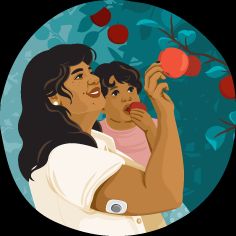Eating acidic foods such as processed meats and citrus is unlikely to change your body’s pH balance. However, research shows that a balanced diet prioritizing plant-based foods is best for overall health.
Your body tightly regulates its pH balance through a variety of mechanisms that involve multiple organs like your kidneys and lungs.
Although your diet may affect the pH of your urine, research generally suggests that consuming acidic or alkaline foods is unlikely to affect the pH level of your blood significantly.
In fact, increased levels of acid in the blood
Still, some people may choose to limit foods high in acid to reduce their
The pH value tells you whether something is an acid, a base, or neutral.
- A pH of 0 indicates a high level of acidity.
- A pH of 7 is neutral.
- A pH of 14 is the most basic, or alkaline.
The distance between two points on the pH scale represents a tenfold difference in the acidity or alkalinity of a substance. A pH of 6 is ten times more acidic than a pH of 7, and so on.
For example, battery acid is extremely acidic at 0, while liquid drain cleaner is very alkaline at 14. Pure distilled water is in the middle at 7. It’s neither acidic nor alkaline.
Just like different substances, different parts of the human body have different pH levels.
Your ideal blood pH is between
Foods considered acidic generally have a pH level of 4.6 or lower.
But the pH of food before you eat it is less important than the amount of acid or alkaline produced with digestion and metabolism of that food.
Excessive phosphorus and proteins over a long period of time can contribute to the development of metabolic acidosis. The U.S. Department of Health and Human Services recommends that protein should be
Foods that tend to cause more acidity in the body if consumed chronically and in excess
- certain dairy products, including cheese
- fish and seafood
- high sodium processed foods
- fresh meats and processed meats, such as corned beef and turkey
- certain starchy foods, such as brown rice, oat flakes, or granola
- carbonated beverages, such as soda, seltzer, or spritzers
- high protein foods and supplements with animal protein
In general, fruits and vegetables are more alkalizing. Including them in a diverse diet full of fruits and vegetables will help prevent the overconsumption of animal protein and prevent the risk of developing metabolic acidosis.
Although most types of fruit are acidic, they’re considered alkalizing, meaning they actually help reduce acid levels in your body.
This also means that they have a negative PRAL. The more negative the PRAL, the more it reduces the amount of acid in your body during digestion.
Here is the PRAL for a 3.5-ounce (100-gram) portion of
- limes: -0.4
- blueberries: -0.6
- blackberries: -1.0
- pineapples: -1.1
- peaches: -1.5
- oranges: -1.6
- plums: -1.7
- apples: -1.8
- tomatoes: -1.8
- purple grapes: -1.9
- green grapes: -2.4
- bananas: -5.2
- pomegranates: -8.1
- raisins: -9.0
Keep in mind that although these fruits are alkalizing in the body, their initial acidity could worsen symptoms for those with upper gastrointestinal issues like reflux.
In fact, doctors often advise people with conditions like gastroesophageal reflux disease (GERD) to limit their intake of acidic foods,
Like fruits, vegetables are also alkalizing and can help reduce acid levels in the body.
Here is the PRAL for a 3.5-ounce (100-gram) serving of
You may choose to avoid drinks high in phosphorus, such as beer or hot chocolate made from packets of cocoa mix. If you do wish to drink alcohol, go with lower phosphorus red or white wine.
Carbonic acid, which is present in all carbonated beverages, contributes to your total body acid. This includes not only soft drinks but also spritzers. The same acidity
If you want to lower your acidity, regular or filtered tap water is best.
When it comes to the benefits of a more alkaline diet,
In addition, it
Some alkalizing (or neutral) foods and beverages you can incorporate into your diet include:
A diet that includes too many acid-producing foods, such as animal proteins, some cheeses, and carbonated beverages, can cause acidity in your urine. This can cause
However, keep in mind that research has turned up conflicting results on how acidic foods may affect bone health due to the variations in total diet among test subjects.
Some evidence suggests that
A
Other research suggests that too much acidity may also increase your it’s for
You don’t need to eliminate acidic foods from your diet to safeguard your health.
Consuming moderate amounts of acid-producing foods as part of a
Consuming more alkaline foods may help you better achieve nutritional goals as established in the
What are the symptoms of too much acid in your diet?
A diet that’s too acidic often
Symptoms of acidosis usually indicate an underlying health condition. Such symptoms include:
Which acidic foods should I limit?
Aim to
- salt
- high sodium condiments, such as soy sauce, steak sauce, barbecue sauce, and some salad dressings
- soft drinks
- highly processed meats
- certain types of cheese, including mozzarella, Parmesan, and brie
Follow a well balanced diet with lots of fruits, vegetables, healthy fats, whole grains, lean meats (fish, poultry, unprocessed red meat) and plant based proteins.
Is an alkaline diet beneficial for your health?
Eating a balanced diet with a focus on low PRAL foods
Because your body closely regulates its pH balance through a series of complicated mechanisms, following an alkaline diet is unlikely to significantly affect the blood pH levels of most healthy adults.
Still, eating a well-rounded diet rich in fruits, vegetables, whole grains, and healthy fats is a great way to help balance your dietary acid load and support overall health.




